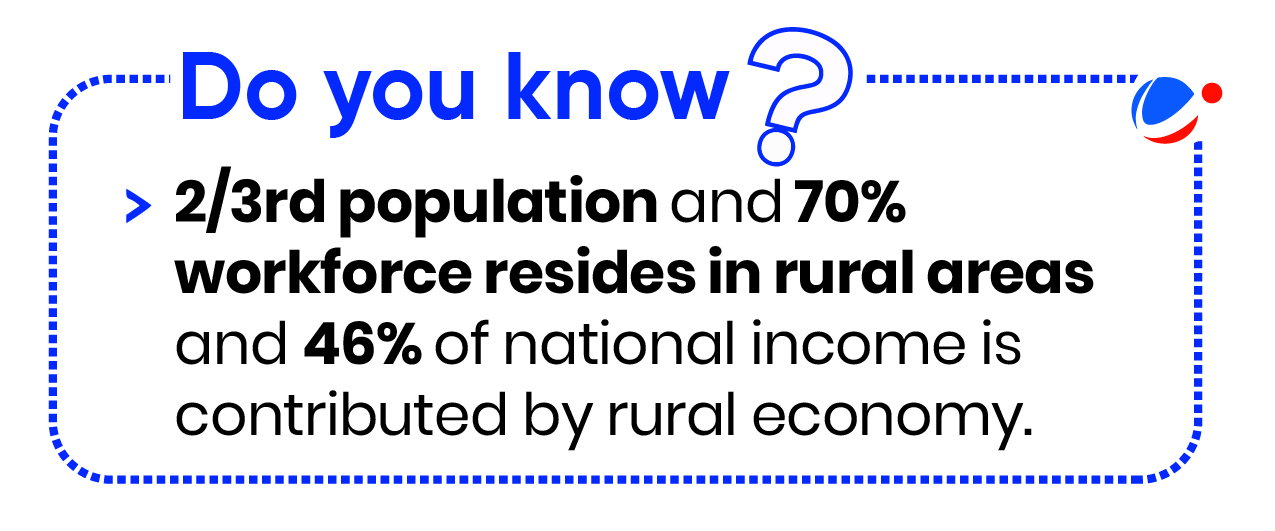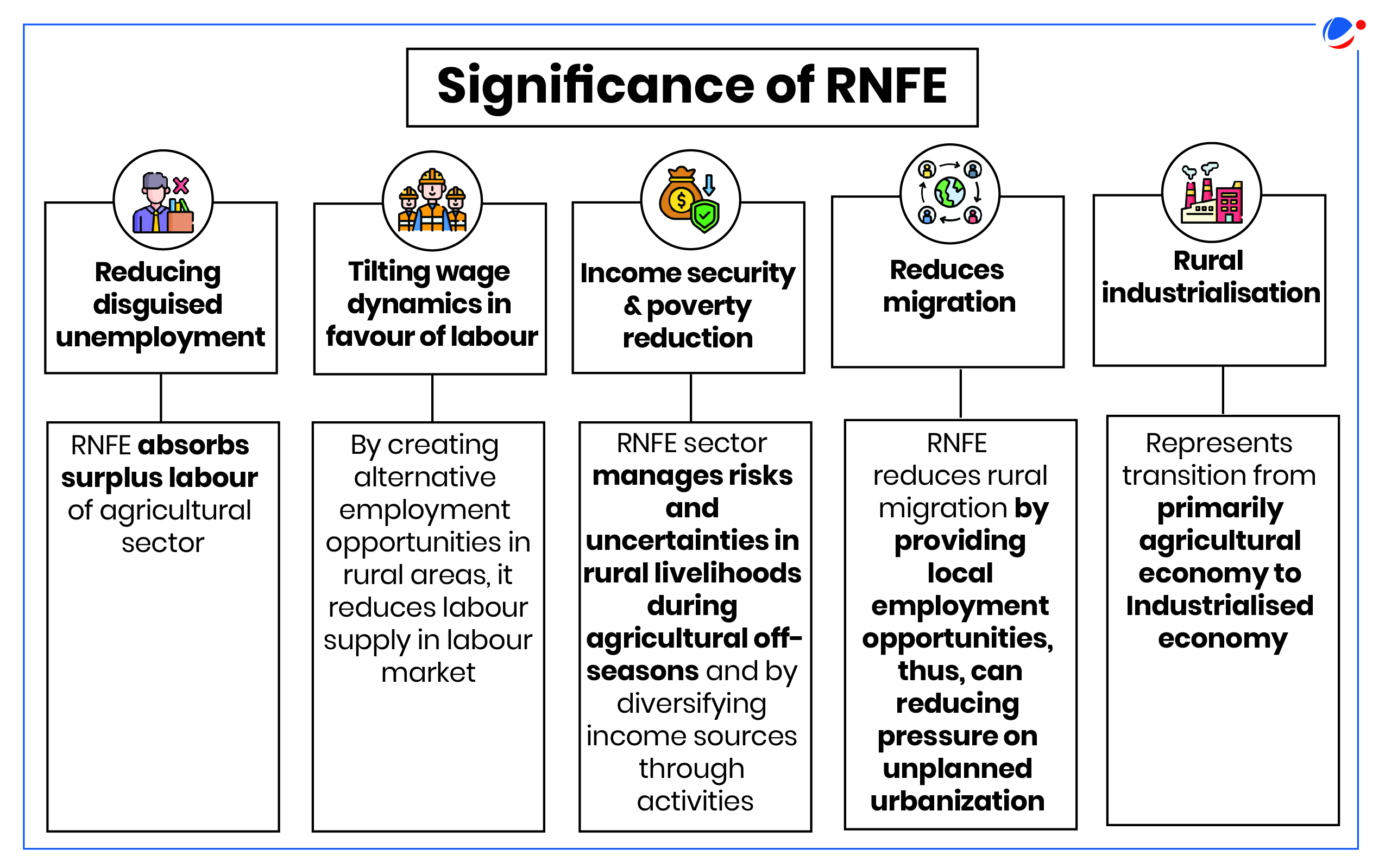Why in the News?

The "State of Rural Youth Employment 2024" report reveals most rural youth see agriculture as unattractive and prefer non-farm jobs, including small businesses.
More on the news
- The report is prepared by the Development Intelligence Unit (DUI), a joint initiative of Transform Rural India (TRI), Sambodhi Research, and the Global Development Incubator (GDI).
- The report highlights that 70% of rural youth cite low productivity and poor profits as reasons for moving away from farming.
About Rural Non-Farm Economy (RNFE)
- RNFE include value chain activities, such as agro-processing, transport, distribution, marketing, and retail, as well as tourism, manufacturing, construction and mining self-employment activities (handicrafts, bakeries, mechanics, kiosks, and so on)
- It is defined both spatially, by activity that takes place in rural areas, and functionally, by a set of activities that do not constitute primary agricultural production.
- Although, agriculture has traditionally dominated the rural economy, but two-thirds of rural income now comes from non-agricultural activities i.e., RNFE.
- Moreover, more than half of the value added in manufacturing sector in India is contributed by rural areas.

Key Determinants of RNFE in India
- Government Policies: Dr. Ashok Dalwai Committee recommended shifting surplus farm labor to non-farm jobs to double farmers' income. Key initiatives include promoting startups in agriculture and allied sectors, Namo Drone Didi schemes, etc.
- Education and Skills: Non-farm income increases with higher levels of education.
- Family Size: Larger families earn less from farm activities but gain more from non-farm income.
- Impact of Climate Change: Climate change heightens the vulnerability of agricultural jobs, emphasizing the need for RNFE.
- Public Spending and Diversification: Infrastructure investment, factory growth, and manufacturing expansion boosts RNFE.
- Infrastructure Development: Development expenditure, especially on infrastructure, promotes construction employment, benefitting both men and women.
Challenges in Rural Non-Farm Economy (RNFE) in India
- Limited Access to Credit: Most RNFE enterprises rely on personal savings or moneylenders for funding, unlike farm activities that benefit from institutional credit.
- Low Worker Productivity: Worker productivity in RNFE is significantly lower compared to urban areas. Only 13% of non-farm enterprises are modern, while the majority are traditional with minimal value addition.
- Informal and Volatile Employment: RNFE jobs often provide: Low and unstable incomes, Poor working conditions, Lack of social security, leading to exploitation. E.g. Construction, the largest RNFE employer, is highly dependent on economic cycles, causing income instability.
- Declining Income Levels: Rural non-agricultural households earn less (₹11,438 per month) than agricultural ones (₹13,661 per month).
Initiatives
|
Way ahead to promote sustainable RNFE
- Expand Credit Access: Strengthen institutional credit, microfinance, and cooperative banks to provide affordable loans to RNFE enterprises through government schemes and financial inclusion initiatives.
- Diversify Employment Opportunities: Promote sectors beyond construction, such as renewable energy, tourism, and digital services, to reduce volatility in incomes.
- Encourage Value Addition: Promote high-value activities like agro-processing, handicrafts, and exports to boost RNFE incomes.
- Regulate Informal Employment: Establish frameworks to improve working conditions, ensure fair wages, and provide social security for RNFE workers.
- Cluster-Based Development: Promote rural industrial clusters for non-farm enterprises to encourage collaboration, innovation, and economies of scale.



